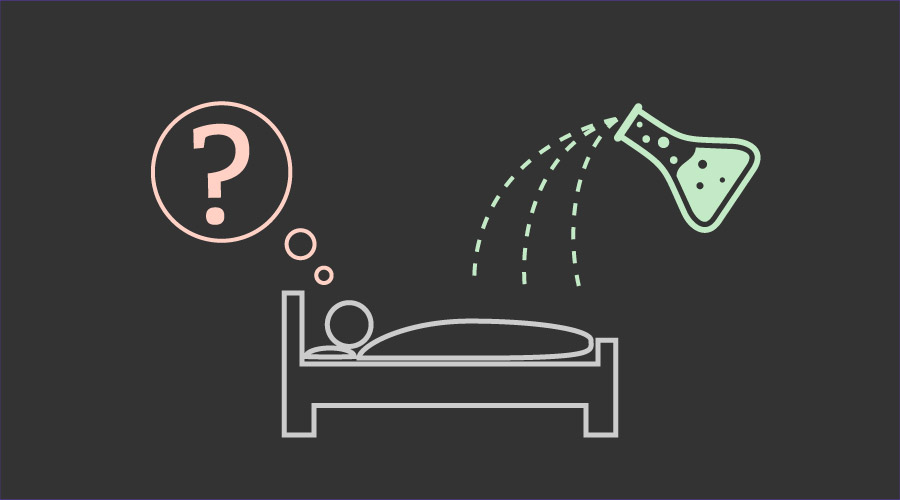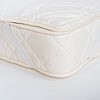Why do mattresses have toxic chemicals in them?
It’s a fair question.
On a lot of levels it seems improbable – impossible even – that something as important as a mattress could be the source of toxic chemicals in our bedrooms. The mattress is, after all, the place we spend over a third of our adult lives. It’s where we sleep, snuggle, relax & unwind. So how is it possible that our mattresses may be the source of serious, lifelong health problems?
3 Reasons Mattresses Have Toxic Chemicals In Them
The reason that mattresses have toxic chemicals are actually pretty simple. While this doesn’t make the toxic chemicals any less harmful, it can be helpful in understanding the causes and what you can do about it.
1. Toxic ingredients are WAY cheaper than natural ingredients.
This is the overriding reason that toxic chemicals continue to be used today. The materials and labor costs that go into using non-toxic ingredients are significantly more expensive than simply using cheap, toxic chemicals. And because most consumers are looking to get a “great price,” manufacturers have an incentive to use cheap toxic ingredients as a shortcut.
Let’s just look at one example: the cost of natural latex vs synthetic latex.
Natural latex is harvested from the sap of the Rubber Tree (kind of like Maple Syrup). You need land to grow rubber trees. You need resources, like water, to grow the rubber trees, and staff to maintain it. Then, you need workers to harvest & collect the sap. Just think of all the cost that goes into that! It also takes a long time to scale up. If you want more natural latex, you need more trees!
Synthetic Latex can be made inside a factory using a few, cheap chemical inputs. It’s quick, easy and inexpensive. The downside is the long term health risks that YOU will face from the toxic chemicals that break down and off-gas over time.
So unless consumers are willing to pay a little more now to prevent long-term health problems in the future, businesses will continue to make cheap, toxic mattresses.
2. It’s nearly impossible for the Environmental Protection Agency (EPA) to take action against toxic chemicals.
Many people wonder “if mattress chemicals are so toxic, why doesn’t the EPA do something about it?” Well, the truth is, it’s nearly impossible for them to do anything about it. Why? Well, since 1976, the main law for chemical safety has been the Toxic Substances Control Act (TSCA). This law was meant to help the EPA regulate chemicals, but in reality, it has made their job impossible. For starters, when this law was introduced, over 62,000 chemicals already on the market remained on the market without any testing. This law put the burden of proof entirely on the EPA to prove a chemical was unsafe, rather than requiring companies to prove that a chemical was safe. The EPA doesn’t have the resources to test all of these chemicals. And the bar is set very high to prove that a chemical poses “unreasonable risk” to public health before the EPA has the power to do anything about it. That’s why some are calling for reform of the TSCA.
3. In many cases, scientist are only learning now the long-term impact of the chemicals in our mattresses.
Showing the long-term impacts of anything new takes a while. That’s why cigarettes were considered “safe” for nearly 100 years before the real health consequences were known! It’s similar with the chemically produced materials inside mattresses like Polyurethane Foam, Synthetic Latex or Chemical Flame Retardants. When these were first produced, little was known of their long-term impacts. But now it’s been shown that these can cause a range of serious, long-term illnesses, including hormonal disruption, neurological damage and even cancer. Because these materials have been accepted for so long, however, it will take everyone a while to catch up.
What You Can Do
Right now, we’re at a critical time in the mattress industry. There’s more and more solid research showing the harmful effects of the toxic chemicals being off-gassed from common mattress materials – like foam, synthetic latex, vinyl & chemical flame retardants. And more people are demanding mattresses that are made using only natural, non-toxic materials.
But there are also some powerful roadblocks to changing the status quo. Mattress companies don’t have an incentive to change because toxic materials are so cheap. And the EPA can do little about it, either.
But you, as a consumer, have the power to change this. First, by simply letting others know about the importance of this topic. By advocating for safer, chemical-free mattresses, you can help spread awareness of what is going on.
Second, you can vote with your wallet. Everyone who buys a non-toxic baby mattress, or toddler mattress, or adult mattress, is sending a message to the mattress industry. It tells them that you, and other consumers, care about the kinds of materials being put into a mattress, and aren’t just looking for the cheapest mattress out there.
Until then, most mattress manufacturers will continue using cheap, toxic materials in their mattresses and using their best marketing tricks to make consumers feel safe about what they are sleeping on each night.




